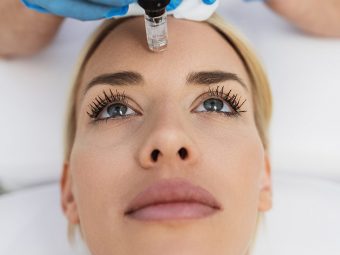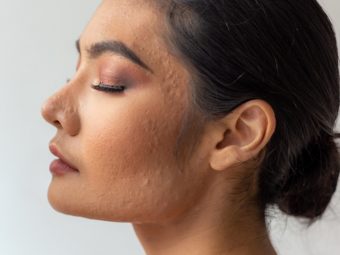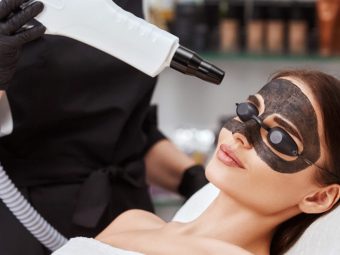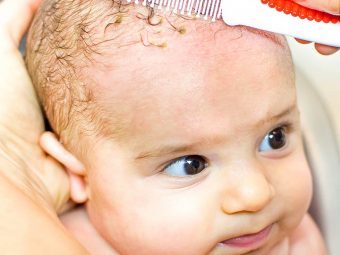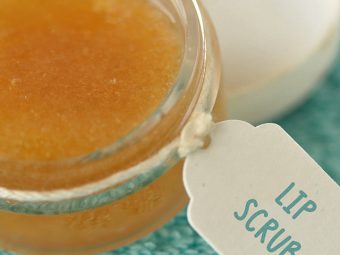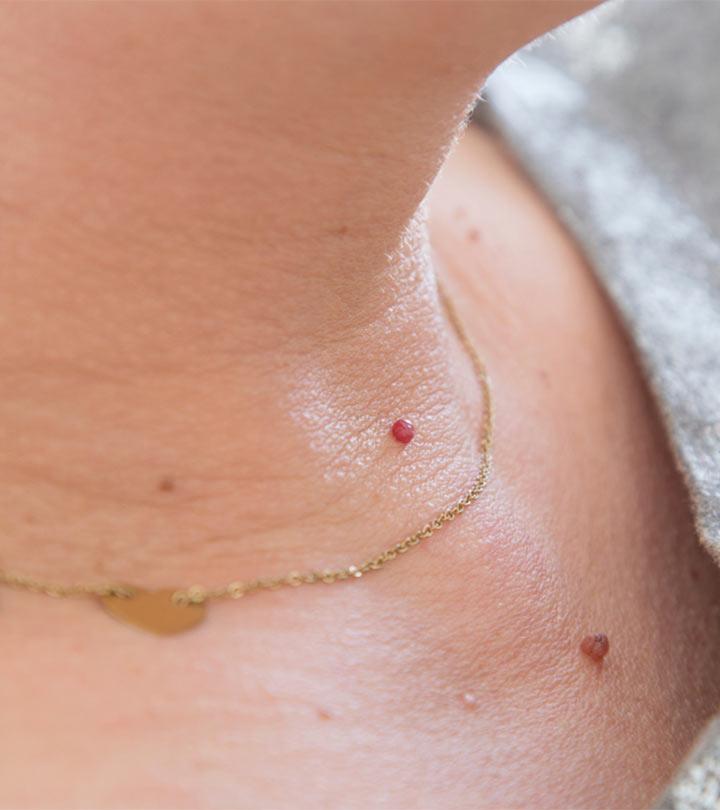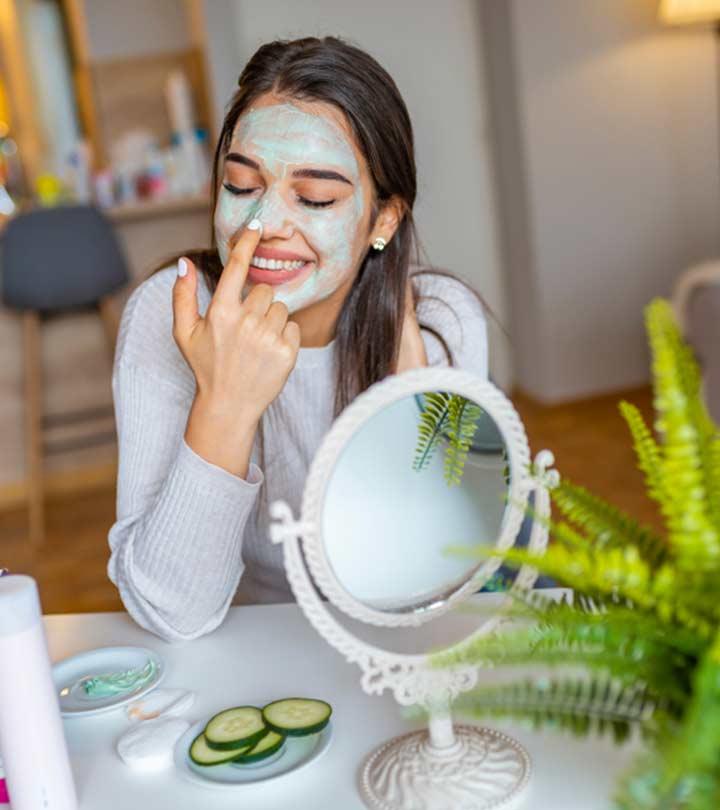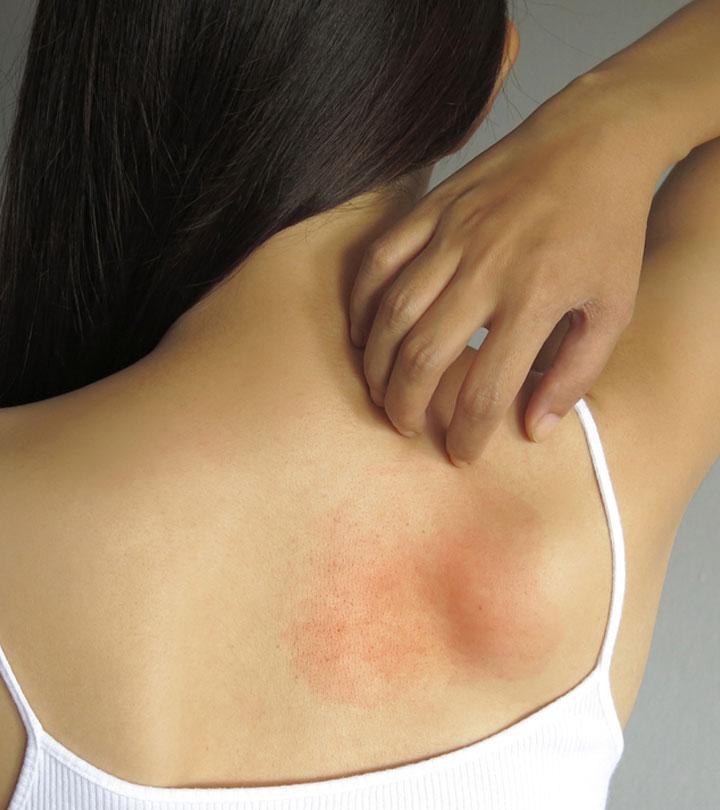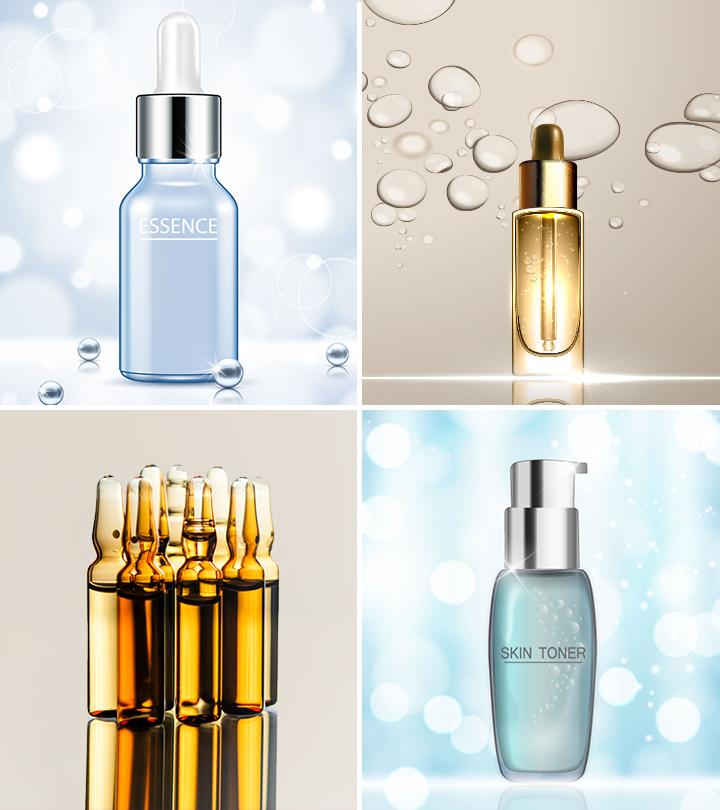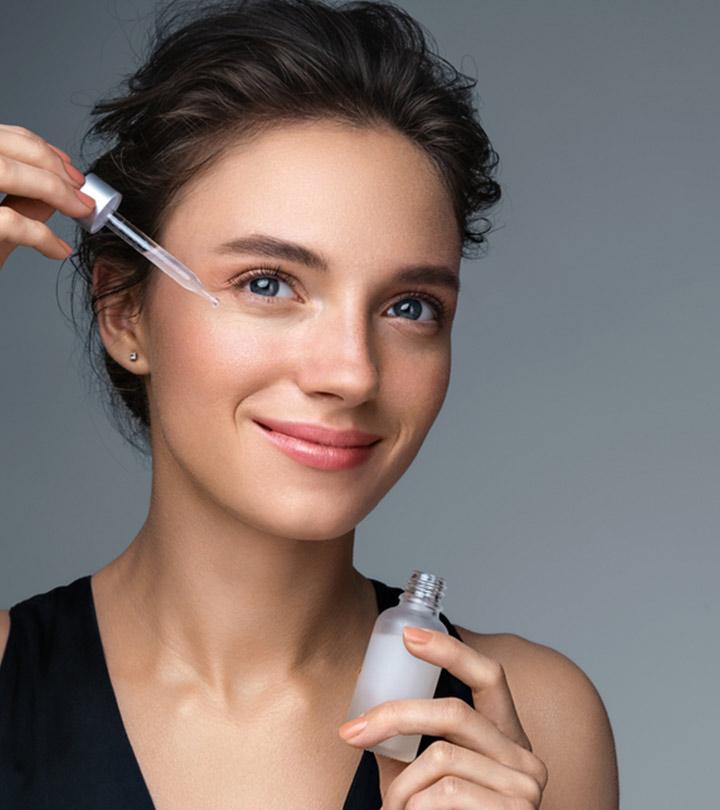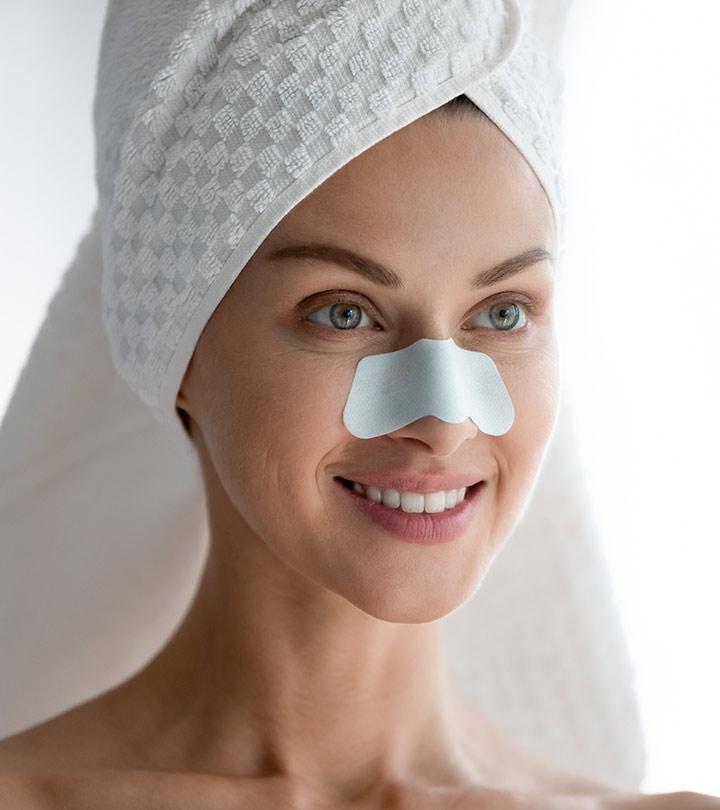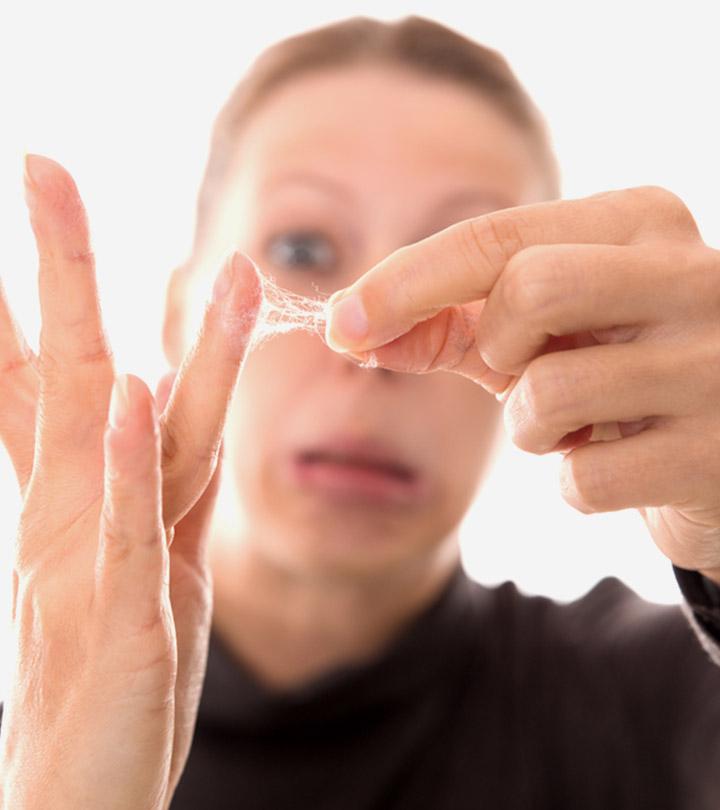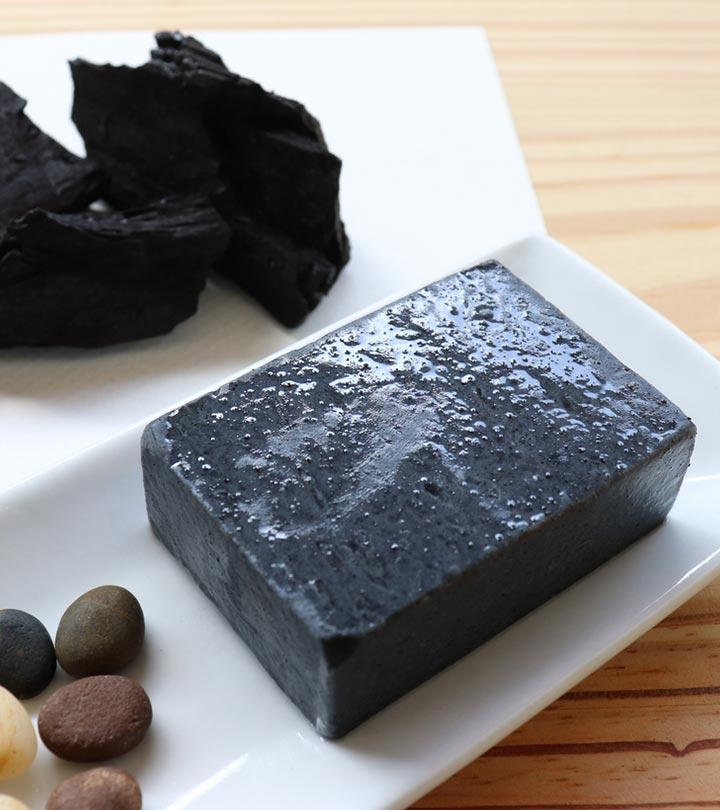How To Prevent Scarring: Important Dos and Don’ts
Taking proactive steps to avoid trauma to your skin is one way to keep it healthy.
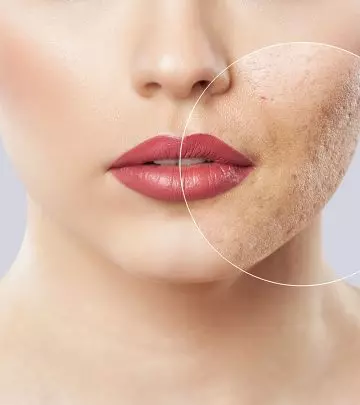
Image: Shutterstock
Every scar has a story to tell – whether they are your skinned knees, accidental falls, or surgical marks. While the wounds may heal, the scars tend to linger. But wouldn’t you want the scars to just fade away?
It may not be possible to prevent every kitchen mishap or accident. But you can avoid the formation of scars or even reduce their intensity. What can you do to prevent scarring? Keep reading to know.
In This Article
What Is A Scar?
A scar is a mark that stays behind on the skin after an injury or a wound has healed. Scar formation is an inevitable part of the tissue repair process that heals the skin (1).
Scars form due to burns, cuts, scratches, or sores. Your skin may also be scarred due to surgical incisions, skin conditions such as acne, or other infections such as chickenpox.
A survey conducted on over 11,100 individuals from Brazil, China, France, Russia, and the United States found that 48.5% reported having at least one scar, and 22% had a scar less than a year old. Further, the most common locations for recent scars for women were the abdomen (20.4%) and face (15.9%), while men reported the face (18.7%) and abdomen (13.2%) as the most frequent areas for recent scars.
Not all scars are equal. Your scar intensity depends on various factors. The most prominent of those are:
- The size and depth of your wound (2)
- The place where you have the wound (2)
- The time your skin takes to heal (2)
- How likely (genetically) are you to scar (2)
- The age at which you get the scar (2)
Scars formed on your skin often fade over time. But they seldom disappear completely (1), (2).
Types Of Scars
You may develop different types of scars depending on how your skin reacts to a particular injury and how it heals. Some prominent types of scars include:
- Normal Fine-Line Scars
Normal fine-line scars form when your skin suffers from a small cut or a minor injury. Such a wound usually leaves behind a raised line that slowly becomes smooth and fades over time. But it does not vanish entirely and may stay on as a visible mark on the skin. While the scar may not be painful, it may itch a little for a few months.
- Keloid Scars
Keloid scars form due to an overgrowth of tissue. They occur when collagen is produced in excessive amounts at the injury spot. The scars tend to grow even when the wound has healed. Such a scar protrudes and extends beyond the original spot of the injury. It can be painful or itchy and can even limit your movement if it appears near a joint (1).
 Did you know?
Did you know?- Hypertrophic Scars
Hypertrophic scars are similar to keloid scars and are formed due to the excess collagen formation at the injury site. However, unlike keloid scars, hypertrophic scars do not extend beyond the original spot of the injury. These scars remain raised above the skin but gradually improve over time (1).
- Pitted Or Sunken Scars
Scars sometimes form due to undesirable skin conditions or infections, such as acne or chickenpox. These skin conditions often leave behind pitted or sunken scars. These are also known as ice-pick scars. They form when an injury results in the loss of the underlying fat in the skin layers (3).
- Contracture Scars
Contracture scars usually form due to burn injuries. These scars cause the skin to shrink or tighten and may restrict movement (1).
- Atrophic Scars
Atrophic scars are indentations in the skin caused by the loss of tissue during the healing process. They are often the result of conditions like acne or chickenpox, which leave behind sunken areas on the skin’s surface. These scars can vary in size and depth, and they often appear as small, round indentations with a pitted look (4).
- Boxcar Scars
Boxcar scars are a type of atrophic scar with well-defined, angular edges reminiscent of a box’s shape. They are usually the result of severe acne and can be found in areas where the skin is relatively thick, like the lower cheeks and jaw (5).
- Rolling Scars
Rolling scars are atrophic scars with a wave-like appearance caused by fibrous bands of tissue between the skin and the subcutaneous layer. This creates an uneven surface (5).
It is possible to reduce the risk of scars or even prevent them to some extent. We will discuss this further in the next section.
How To Prevent Scarring
Your skin tissues suffer damage when your skin is injured. This injury causes collagen to get released to help the tissues heal. This build-up of collagen at the injury site causes a scar to form. This collagen may break down at the injury site with time, causing the scar to become a little smooth.
Scar formation is a natural process to heal the skin. Hence, there is no way to prevent it if your skin suffers an injury. However, you can minimize the trauma to the skin and limit the chances of scar development. Here are ways to achieve the same:
- Avoid Wounds And Injuries
Take care to avoid wounds or injuries that can result in scars. You can start wearing gloves when working in the kitchen or proper safety gear when you are physically active (like elbow pads or knee pads). These preventive measures can protect you from getting injured in the first place.
- Treat Injuries Without Delay
Perform the basic first aid immediately if you suffer from an injury or cut. This will help address the wound and minimize the trauma to the skin. However, if the injury is severe, consult a doctor and seek medical attention as fast as possible.
- Clean The Injury Site
Clean the site of injury as soon as you get hurt. You can use plain water and mild soap to remove the bacterial build-up at the injury site and prevent infection.
 Quick tip
Quick tip- Apply Moisturizer
Apply moisturizer to the wound to improve the signs of scar formation. Research proves that moisturizers may help improve the signs and symptoms of scars (6).
- Apply A Layer Of Petroleum Jelly
Applying plain petroleum jelly can help keep the injury site moist. It also may reduce the chances of scab formation and promote skin healing (7).
- Cover The Injury And Change Bandage Daily
Cover the injury with the help of a non-stick dressing. Avoid using gauze on the wound. Dressing the wound will help you minimize the chances of infections or re-injury. Also, make it a point to change the bandage every day. This can help keep your wound clean and monitor its progress.
- Minimize Movement
Movement at the injury site may agitate the wound and lead to a thicker scar. Hence, minimize movement as much as possible.
- Avoid Picking At The Scabs
Resist any tendency to pick at the scabs. Picking at the scabs would only delay the healing process. You may even irritate the wound and cause it to bleed or result in an infection.
The following pointers can further help reduce the chances of scarring.
Dos And Don’ts Of Scar Prevention
- Get Stitches If Required
Get any deep cuts immediately stitched by a doctor. This will help accelerate the healing process. But remember to reach out to your doctor as fast as possible after the injury. Any delay may cause germs and infections to form at the wound site.
- Stay Away From False Promises Of Scar Creams
Several cosmetic creams claim to reduce scars and make them disappear completely. Please be wary of such creams unless your doctor prescribes them. Most of those products are mere marketing gimmicks.
- Massage The Wound
Although not proven, vitamin E is believed to make your scar less visible. However, if your skin starts to itch or turn red, stop using it immediately.
- Avoid Scratching Or Picking At The Scar
Do not attempt to scratch or pick at the scar. Allow it to heal naturally. Picking at or scratching the scar can delay the process of healing.
- Avoid Friction At The Scar Area
Always ensure the injured area does not suffer any friction. For instance, wear loose clothes around that area. Restricting movement may also help.
- Have A Well-Balanced Diet
Eat foods rich in protein, minerals, and vitamins. These include green leafy vegetables, milk, and yogurt. They help skin heal better.
- Avoid Smoking
Smoking can hamper and delay the healing process. Avoid smoking to allow faster healing.
- Do Not Expose Your Scar To Sunlight
Your scar would be sensitive to the intense rays of the sun. Hence, avoid sun exposure. Remember to apply a strong sunblock cream liberally to the scarred area before stepping out into the sun. Reapply the sunblock cream if you stay out for long.
Skin injuries involving scars take time to heal. Some scars may take more than 2 years to fade and settle down. So, have patience and allow your scar to heal naturally.
Scars are marks that stay behind even after your wound is healed. They may not completely disappear but may fade away over time. There are several remedies and treatments to reduce the appearance of these scars. The time needed to minimize their appearance also depends on the type of scar and injury you have. However, you can take steps to prevent scarring and reduce the intensity of scars. With proper care and timely treatment, you can avoid scarring. Consult your dermatologist to learn more about preventing scarring and scar treatments.
Frequently Asked Questions
Does Vaseline prevent scarring?
No. Vaseline may not prevent scars but may help to minimize their appearance. It locks moisture to the skin and prevents drying. This promotes proper wound healing, reducing the risk of deep scars.
Does aloe vera help with scars?
Yes. The topical application of aloe vera gel may help reduce the scar size, decrease inflammation, improve wound contraction, and regenerates wound tissues (8).
Can vitamin C remove scars?
Topical application of vitamin C may help reduce scars as it stimulates collagen production and minimizes the appearance of scars (9).
What do healing scars look like?
Healing scars are slightly lighter than the skin color and are not sensitive to touch.
Is coconut oil good for scars?
Yes. A rat study found that topical application of coconut oil could promote collagen production and faster wound healing (10). This may reduce the risk of scars and improve their appearance.
Is shea butter good for scars?
Shea butter has skin hydrating properties, which may help improve the scar texture and appearance. It may help reduce the risk of developing keloid scars by preventing fibroblast proliferation (scar tissue production) (11).
Key Takeaways
- While it is not possible to prevent scars and injuries, certain precautions and remedies can help better deal with the scarring, inflammation, and healing.
- Keloid, pitted, fine line, or hypertrophic, apart from the type, place, and depth of your scar, your genetics, age, and immunity also influence how well your body recovers from any scar.
- While cleaning and treating the scar immediately with first aid is important, keeping the site untouched and unexposed to further harm is crucial in fast recovery.
Discover how to prevent scarring with certain unavoidable precautions and remedies. Watch this video that involves essential tips from a dermatologist to treat concerned areas and heal faster without the possibility of developing scars.
References
Articles on StyleCraze are backed by verified information from peer-reviewed and academic research papers, reputed organizations, research institutions, and medical associations to ensure accuracy and relevance. Read our editorial policy to learn more.
- Skin scarring
https://www.ncbi.nlm.nih.gov/pmc/articles/PMC1125033/ - Scars
https://medlineplus.gov/scars.html - Atrophic Acne Scarring
https://www.ncbi.nlm.nih.gov/labs/pmc/articles/PMC4295858/ - Treatment of Scars
https://journals.lww.com/annalsplasticsurgery/Abstract/1997/10000/Treatment_of_Scars__A_Review.14.aspx - Current Therapeutic Approach to Acne Scars
https://hrcak.srce.hr/file/131874 - A review of the effects of moisturizers on the appearance of scars and striae
https://onlinelibrary.wiley.com/doi/full/10.1111/j.1468-2494.2012.00751.x - Update on Postsurgical Scar Management
https://www.ncbi.nlm.nih.gov/labs/pmc/articles/PMC4961501/ - Topical Application of Aloe vera Accelerated Wound Healing, Modeling, and Remodeling: An Experimental Study
https://pubmed.ncbi.nlm.nih.gov/25003428/ - A Clinical Evaluation of Efficacy and Safety of Hyaluronan Sponge with Vitamin C Versus Placebo for Scar Reduction
https://www.ncbi.nlm.nih.gov/pmc/articles/PMC4977120/ - Effect of topical application of virgin coconut oil on skin components and antioxidant status during dermal wound healing in young rats
https://pubmed.ncbi.nlm.nih.gov/20523108/ - Inhibitory Activities of Omega-3 Fatty Acids and Traditional African Remedies on Keloid Fibroblasts
https://www.ncbi.nlm.nih.gov/pmc/articles/PMC3905615/ - How To Get Rid Of Old Scars – Home Remedies And Prevention Tips
- How To Get Rid Of Acne Scars And Pimple Marks Naturally
- What Are Boxcar Scars? Is It Possible To Treat Them?
- Scar Tissue: What Is It? How To Deal With It?









